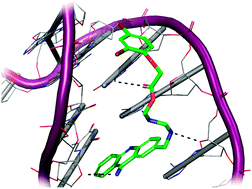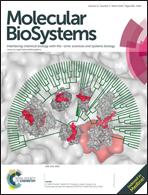Rational design and interaction studies of combilexins towards duplex DNA
Abstract
DNA, which is the genetic material, plays a predominant role in all living organisms. Alterations in the structure and function of this genetic material correlate with complex diseases such as cancer. A number of anticancer drugs exert their action by binding to DNA. Although DNA binding compounds exert genotoxicity, there is a high demand for novel DNA binding molecules because they can be further developed into anticancer drugs. In the present study, the mode of interaction of two compounds, 2,4-D and tacrine, has been determined to be minor groove binding and intercalation, respectively. Subsequently, from their binding modes, novel combilexin molecules were designed using computational tools and their mode of binding and affinities towards DNA were determined through a series of molecular modeling experiments such as molecular docking, molecular dynamics and binding free energy calculations. The entire study focuses on the potential effects of combilexins compared to intercalators and minor groove binders. The combilexins deduced from the current study may be considered as lead compounds for the development of better anticancer drugs.


 Please wait while we load your content...
Please wait while we load your content...